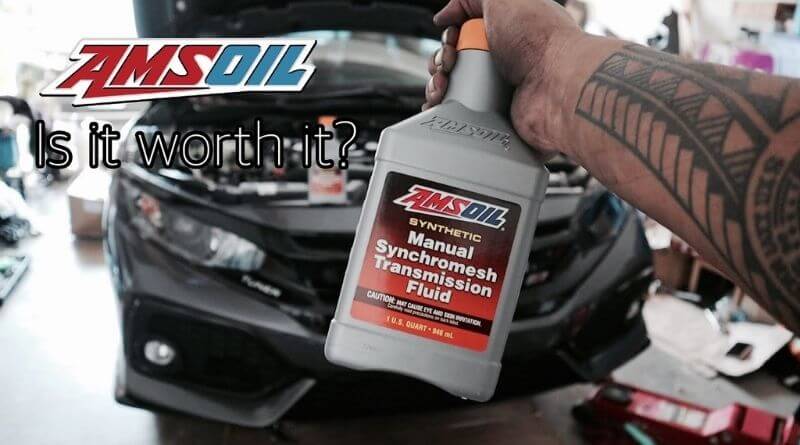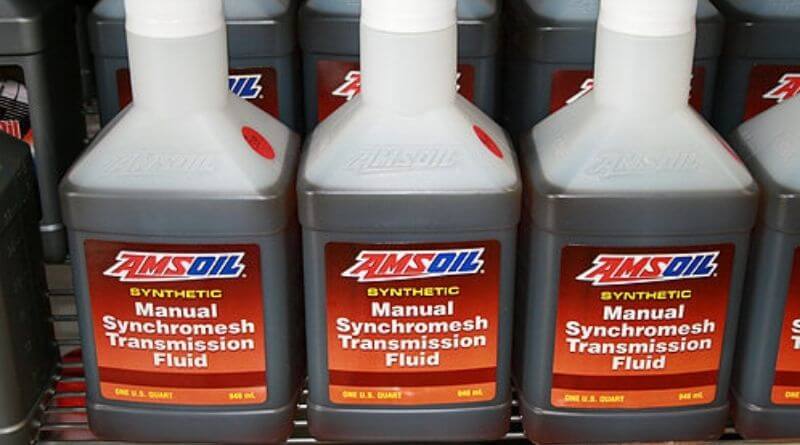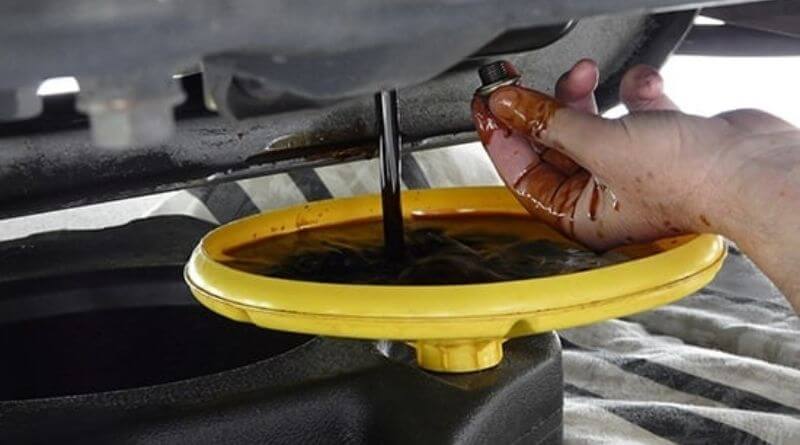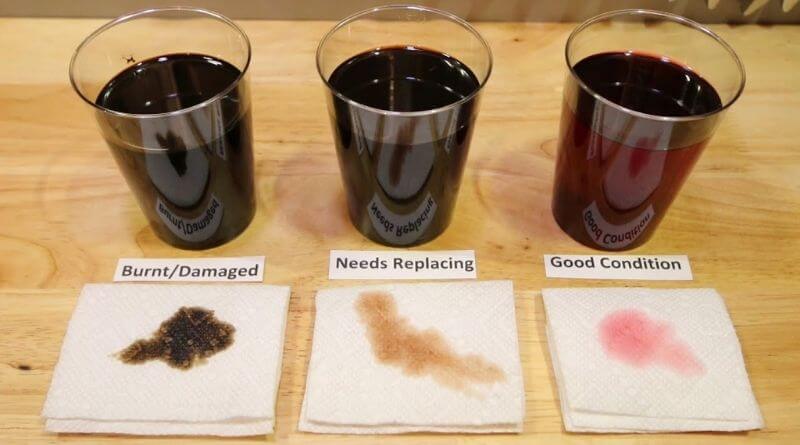Hey there! This post contains affiliate links to products. We may receive a commission for purchases made through these links. But it never influences our product selection process.
Many vehicle owners are typically aware of motor oil, and they change that regularly. But, the transmission fluid doesn’t get enough attention because of information shortage. You hopefully know a vehicle has multiple moving parts.
Due to moving continuously, those parts may wear out or become overheated over time. If you don’t be careful enough, ultimately, you may face extensive damage to the transmission parts.

What do you need to do then? Well, to prevent those issues, you need to ensure proper lubricant. Transmission fluid works as a lubricant in this situation.
You will find various transmission fluids in the market, making your choice tougher. We intend to make your selection easier, so we pick the one of best transmission fluids by AMSOIL. In our following AMSOIL transmission fluid review, we will discuss more.
You may also like: stp full synthetic engine oil reviews in 2022
What is Transmission Fluid?
Actually, transmission fluid is one kind of lubricant. This lubricant is used to protect your vehicle’s clutch packs and transmission gears when you enable crisp, smooth shifts.
Note: Every lubricant typically offers the same function as creating a fluid film between surfaces.
Therefore, it will reduce friction and prevent contact. If you fail to ensure proper transmission fluid, your vehicle’s gears may overheat or wear out. The aftermath is the short life of the transmission and demands a big expense for repair. In short, the transmission fluid has equal importance to motor oil.
There are two different types of transmission fluid: AMSOIL ATF transmission fluid and AMSOIL manual transmission fluid. That difference is that the manual transmission can’t produce the same heat as the automatic transmission fluid. That’s why manufacturers produce two different fluids for two different engines.
AMSOIL transmission fluid Review

Currently, AMSOIL is considered one of the best transmission fluid manufacturers in the fluid market. That best tag comes due to its blissful amenities. Let’s reveal those from the following.
Offer a blissful Mileage:
AMSOIL authority researched the mileage of using AMSOIL synthetic automatic transmission fluid from AMSOIL ATF signature series. They chose a cab for this purpose and intended to cover 180000 miles.
After passing the 180000 miles test, the authority found it can resist oxidation longer than the requirement. Moreover, 83 percent of original oxidation inhibitors will give you long-lasting resistance.
On the other hand, the Manual Synchromesh Transmission Fluid 5W-30 also gives you up to 150,000 miles of service.
Excellent is reducing friction wear and heat:
The manufacturer uses friction-modifier additives in the AMS transmission fluid. Therefore, you will get excellent static friction (clutch-holding capacity), slipping torque-converter clutches (anti-shudder properties), and dynamic friction (torque-transfer ability).
The manufacturer revealed (after 180,000-mile) that this fluid offers nearly similar friction properties for new fluid for reliable and smooth shifts.
Excellent performance in cold-weather:
Those who are living in cold climates may face startup-related issues. To solve that issue, this transmission fluid offers resistance in winter. Therefore, you will get reliable and fast shifts when you start in cold climates.
Moreover, the manufacturer includes outstanding low-temperature fluidity, which helps to increase fuel efficiency.
So, how is that fuel-efficiency tag attached? Well, this transmission fluid has no wax (unlike regular oils). Therefore, it will help improve energy efficiency, warm-up times and shift response.
Blissful leak protection:
This transmission fluid comes with seal conditioners that prevent gaskets and seals from cracking and drying out. In that way, this fluid can reduce fluid leakage related risk.
Offer extended drain intervals, leakage-related:
Severe service vehicles can maximize the drain interval (OEM’s recommended) using oxidation and shearing resistance. Therefore, you can save your money and time.
Offer multiple products to meet your vehicle spec:
AMSOIL manufactured different fluids to meet the car specification. In the following, we enlist some of those.
| Product Name | Application |
| AMSOIL multi vehicle synthetic power steering fluid | Which demands a power steering system. |
| AMSOIL Synthetic CVT fluid | You can use this fluid for the belt- and chain-type continuously variable transmission. |
| AMSOIL racing transmission fluid | Recommended using for which demand Ford* Type F fluid or Allison* C-4. |
| Manual Synchromesh Transmission Fluid | Recommend for automotive and light-truck which demand manual transmission fluid. |
| AMSOIL FULL SYNTHETIC Dominator 2-Cycle Oil | Recommended for 2-stroke motors. |
User-friendly Packet design:
User-friendly packaging sometimes plays a great role in placing it in the favorite list. Users typically look for a package that minimizes waste and helps pour, especially for the transmission fluid.
AMSOIL manufacturers take that issue on their mind and include an innovative design resulting in easier fills and minimizing waste.
However, the manufacturer brings different size bottles to meet your demand, for instance, Amsoil Signature Series 5W-30 Synthetic Motor Oil 1-gal.
What do customers say?
Customers show their positive ratings towards Amsoil Manual Synchromesh Transmission Fluid. Those who use this transmission fluid on their vehicle get smooth transmission shifting. One comment, his vehicle’s shifting performance became improved in the cold weather.
Alternatives: Best 2 Brands Transmission Fluid
Another two renowned transmission fluid manufacturing brands out of the competition are valvoline and CASTROL. Let’s review the top line products by them.
Editor’s Choice

Valvoline Automatic Transmission Fluid:
Valvoline maxlife multi-vehicle full synthetic automatic transmission fluid is made to help long transmission life.
Moreover, it is formulated with a special mixture of base oils and viscosity modifiers to provide smooth oil flow at low temperature.
If you have a Honda Odyssey, then choosing this fluid could be best.
BEST DEAL

Castrol transmax import multi-vehicle automatic transmission fluid, 1 Quart
Castrol transmax automatic transmission fluid is formulated for Nissan, Toyota, Honda and other vehicles. When it comes to smooth transmission performance, I recommend this automatic transmission fluid because of its increased friction durability. It works excellent for classic Ford motors.
How to change transmission fluid: Step by Step Guide

Firstly, you need to check the transmission fluid of your vehicle. Typically, the transmission fluid looks bright pink. When it becomes damaged, the color becomes black, smells burnt, or you will find metallic specks in it. After facing such issues, you need to change the transmission fluid. Let’s see the process of changing transmission fluid.
Items you need:
- Some gloves and safety goggles to protect eyes and hands.
- A 13 millimeter, 10 millimeters and an extension for the ratchet.
- Torque wrench.
- Scraper for the gasket.
- An abrasive pad to clean the gasket.
- A funnel.
- Some brake clean.
- Some towels.
- Some catch can for catching all the fluid.
Now, check the manual to see which transmission fluid your vehicle needs.
Step 1:
You need to lift the vehicle to drain the transmission fluid. You can use ramps, or jack stands to lift the vehicle. If you use ramps, then chocked off the wheels using a little wood. Then, keep the trap and catch the can under the truck.
Step 2:
Now locate the transmission pan underneath your vehicle. Some transmission pans offer a drain bolt; others come with nothing. If you find no drain bolt, you need to remove all the bolts using a normal ratchet. If you face any tricky bolt (behind the catalytic converter), use universal joint extension.
Note: While removing bolts, you can leave the front bolt. Therefore, it will come down at an angle and keep those fluids easily.
Step 3:
Next, your task is to remove the old gasket and then install a brand new one on the oil pan. Typically, the rubber gasket is easier to open, but if yours doesn’t come off easily, use a plastic scraper.
Note: Don’t use a metal scraper because it will gouge the metal and cause a little scratch and leak in the future.
Step 4:
Up next, take a break cleanly and spray on the pan to clean thoroughly. Then, you can use a towel to clean. Again take a pad and clean it up.
Note: You need to ensure a dirt and gasket material-free surface. Otherwise, the gasket material may leak.
Step 5:
Now, take a silicone paste and use it on the pan to make the surface tacky. Therefore, the gasket won’t move around while putting on. Then, put the gasket on perfectly and ensure all the holes are aligned. Note: If you use a cork or paper gasket, use a gasket adhesive to prevent leaks.
Step 6:
When you install the pan, make sure the melting surface is cleaned. You can use an abrasive sponge in that case. Now, take the pan and line up the gasket, then press the pan against the transmission to avoid moving the gasket. Then, tighten the bolts using the gasket.
Step 7:
Now, check how much fluid you need to add. Then, to fill the transmission fluid, you can use the dipstick hole.
Moreover, if your vehicle has no dipstick, you will find a fill bolt on the top of the transmission. Once you find the place, place a funnel and pour the transmission fluid. You need to remove the funnel and put the dipstick back in.
Finally, start your car to check.
You may also like: 2016 ford focus oil change Guide
How often should I change my transmission fluid?

The transmission fluid may be contaminated with sludge and particles or oxidize over time. It doesn’t demand frequent checking like motor oil, but you need to check it regularly.
If your vehicle’s transmission fluid starts breaking down or becomes low, you will face a poor shifting-related issue.
Changing the transmission fluid typically varies from vehicle to vehicle. But, the manufacturer’s recommended miles lie between every 30,000 to 150,000 miles or 48,000 to 240,000 km.
One word of caution: If you drive in your city, which demands constant gear changing, then better to change the transmission fluid more often.
So, why do you need to change more often? The automatic transmission comes with multiple moving parts bathed in ATF (automatic transmission fluid). Hence those moving parts run smoothly. When the fluid can’t lubricate perfectly, the transmission becomes hot and hard leads to failure.
Experts say it is good to check the transmission fluid once a month. While checking, you need to check the fluid level and the condition. Many modern vehicles offer no dipsticks or come with hard-to-reach locations.
FAQs (Frequently Asked Questions):
Is Amsoil transmission fluid any good?
You can blindly keep the AMSOIL Automatic Transmission Fluid at the top when discussing the best transmission fluid. This transmission fluid offers optimum protection and performance for the vehicle transmission using it. Some of the amenities are:
01. You will get a blissful performance in cold weather.
02. Offer reliable leak protection, easier packet design, and so on.
Does Amsoil make transmission fluid?
Yes, AMSOIL makes transmission fluid. AMSOIL is a popular name in the transmission fluid manufacturing industry. Currently, they formulated automatic, manual, power sport and hydrostatic transmission fluid. Those differences in transmission fluids come to meet the common specifications of the transmission fluid.
Why should you never change transmission fluid?
Similar to the motor oil, transmission oil also needs to be replaced. But, it doesn’t demand frequent changes like the motor oil.
You have better check the fluid to know whether or not it is dirty. A dirty fluid will not lubricate effectively. Plus, you can’t get good heat disperses. Therefore, the chances of wear and tear will rise on the transmission parts and the clutches.
Is it bad to change transmission fluid on high mileage?
It is risky to change the transmission fluid on your high-mileage vehicle. You don’t need to change if you find good transmission running and the first-rated fluid. We said that changing transmission fluid may lead to transmission failure.
Can you add transmission fluid through the dipstick?
Typically, a dipstick comes with two different markings to show the “full” status. One marking is warm, and the other one is cold. If you don’t see the fluid level on the warm line, you had better add transmission fluid.
Then, take a long funnel and place it into the fluid dipstick hole. Now, you need to carefully pour a small amount of the transmission fluid and check the warm level each time until you pour the perfect level.
Final Thought
So, we are on the edge of the discussion on AMSOIL transmission fluid review. If you are a vehicle owner, don’t show laziness in changing transmission fluid. Take care of your vehicle to get a blissful service. Hopefully, you pass some nice moments and get essential information from here. However, if you have any queries, then ask through the comment section.
Related Posts:
- Is The Jeep Cherokee Frame or Unibody (Briefly Answered) - November 10, 2022
- Are Titan Wheel Spacers Good (The 360 Guidelines) - November 9, 2022
- FCW off Jeep (Is It Important for Your Car) - November 9, 2022

